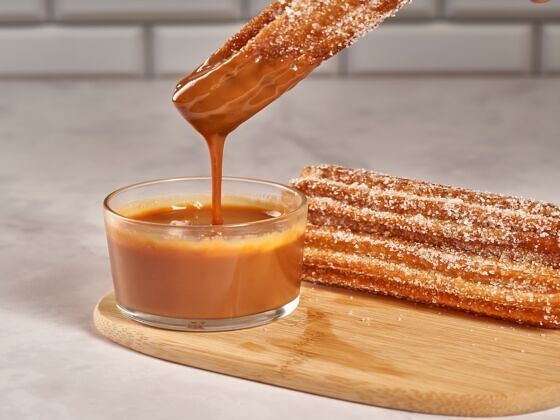When you think of Spanish desserts, churros are probably the first thing that spring to mind. Churros are a type of fried dough pastry, popular in Spanish and Latin American cuisine. They’re made by mixing flour, water, and salt into a dough, which is then piped through a star-shaped nozzle and deep-fried until crispy and golden brown. The classic churro is dusted with cinnamon sugar and often served with a dipping sauce, like chocolate or dulce de leche. The dessert has become so popular that restaurants all around the world are putting their own special spin on it — perhaps most notably, Ole Churros in Las Vegas


The Dessert Shop in Las Vegas Is Putting a Tasty Twist on Classic Churros
Located in the heart of Las Vegas, Ole Churros is a small shop that serves up some of the most delicious, authentic churros in the city. What really sets Ole Churros apart is the fact that they make their churros fresh daily. Each churro is prepared right in front of you and dusted with either sugar or cinnamon sugar. Then, it’s served piping hot with a variety of sauce options, including the popular Spanish hot chocolate.
@foodwtf Visit #OleChurros for the best Spanish churros in 📍#LasVegas 😍 🎥 @hookedlv #foodietiktok #foodietok #vegaseats ♬ Originalton – 🎧
The recent popularity of churros is likely due to their versatility. They can be enjoyed as a dessert, a snack, or even as a breakfast food, and with a variety of sauce options, there’s an almost endless number of ways to eat them.
They also have a rich history and cultural significance. It’s tough to pinpoint their exact origin, but one theory suggests that Spanish shepherds invented the dessert. As they moved their flocks through the mountains, they needed a portable and hearty snack, and they could easily whip up churros using ingredients they already had on hand, like flour, water, and oil. Another theory is that churros were brought to Spain by the Portuguese. In 1540, Portuguese explorers sailed to Japan, where they encountered a local dish called youtiao. Youtiao is a fried doughnut stick, similar in shape to a churro. The Portuguese may have brought the concept of youtiao back to Spain, where it was adapted to produce churros.